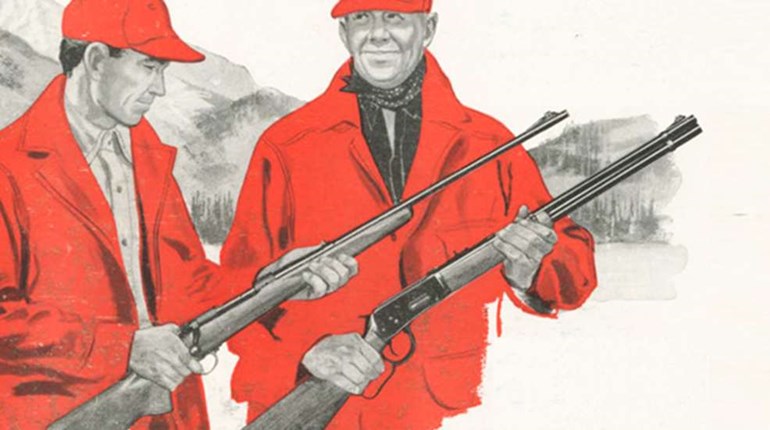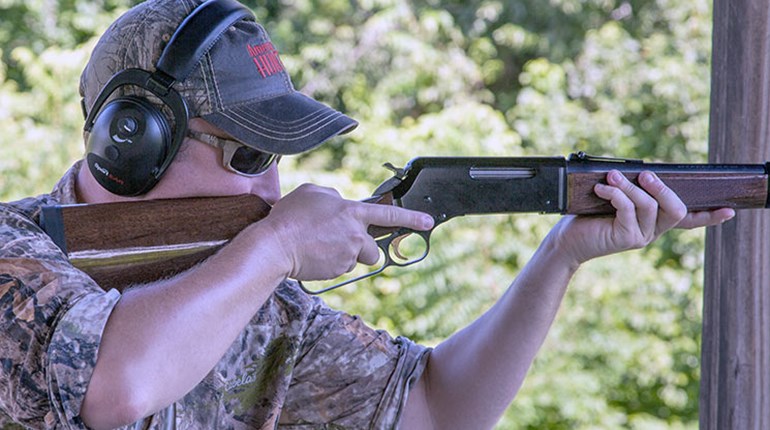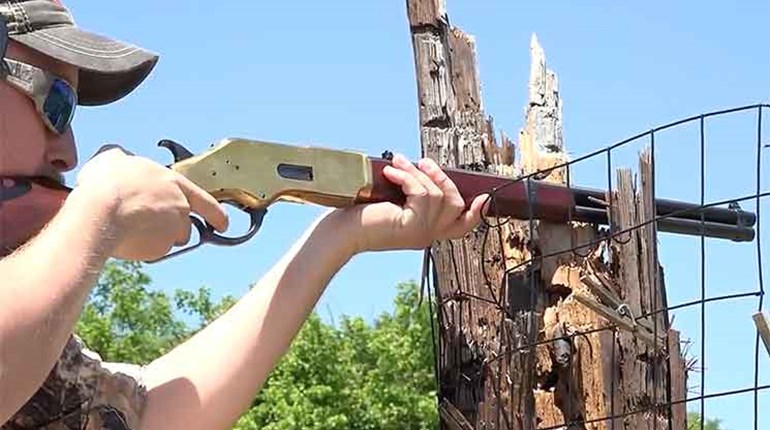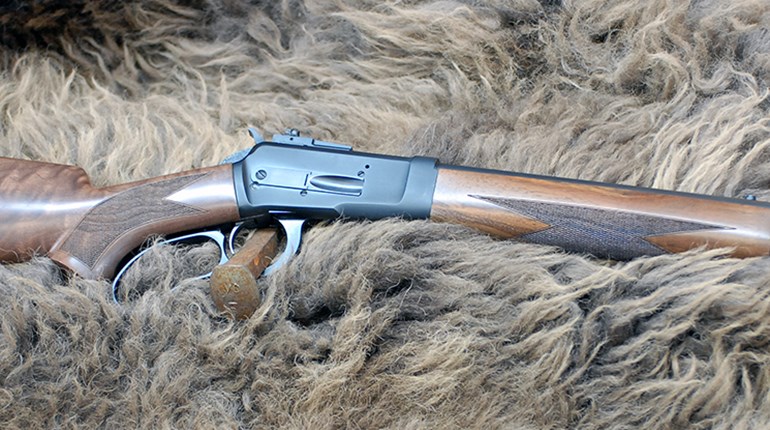** When you buy products through the links on our site, we may earn a commission that supports NRA's mission to protect, preserve and defend the Second Amendment. **

The lever-action rifle is a classic American design that matured between 1866 and 1900 in the hands of cowboys, pioneers and lawmen in the Old West. According to legend, Winchester lever-action rifles "Won the West." The lever-action remains a popular favorite among American hunters and cowboy-action shooters today.
Operation is by means of a full loop hand lever rotating on a pivot under the receiver. The lever is keyed to the bolt; pulling the lever downward unlocks the bolt, extracts and ejects the cartridge case and recocks the hammer. Pulling the lever upward feeds and chambers a fresh cartridge and locks the bolt to the receiver. The hand lever remains against the pistol grip when the action is closed and locked.
Most lever-action rifles have an exposed hammer with a tubular magazine under the barrel. The receiver on most lever-action rifles is a stressed part in that the bolt locks to it. Many lever-action designs are weak in that they cannot handle cartridges with breech pressures above 40,000 pounds per square inch (psi).
While lever-action rifles offer accuracy suitable for most hunting purposes, they are not suitable for general target shooting due to the two-piece stocks and the lack of stiffness in the thin-walled receivers.
Most lever guns are rifles, although lever-action shotguns were offered around 1900 and have recently been reintroduced.
The advantages of lever-actions are fast operation; classic, trim styling; and light weight. The disadvantages? Many models are unsuited for high-pressure cartridges; they offer mediocre accuracy potential; and they're hard to disassemble for cleaning and maintenance.
Operation is by means of a full loop hand lever rotating on a pivot under the receiver. The lever is keyed to the bolt; pulling the lever downward unlocks the bolt, extracts and ejects the cartridge case and recocks the hammer. Pulling the lever upward feeds and chambers a fresh cartridge and locks the bolt to the receiver. The hand lever remains against the pistol grip when the action is closed and locked.
Most lever-action rifles have an exposed hammer with a tubular magazine under the barrel. The receiver on most lever-action rifles is a stressed part in that the bolt locks to it. Many lever-action designs are weak in that they cannot handle cartridges with breech pressures above 40,000 pounds per square inch (psi).
While lever-action rifles offer accuracy suitable for most hunting purposes, they are not suitable for general target shooting due to the two-piece stocks and the lack of stiffness in the thin-walled receivers.
Most lever guns are rifles, although lever-action shotguns were offered around 1900 and have recently been reintroduced.
The advantages of lever-actions are fast operation; classic, trim styling; and light weight. The disadvantages? Many models are unsuited for high-pressure cartridges; they offer mediocre accuracy potential; and they're hard to disassemble for cleaning and maintenance.







































